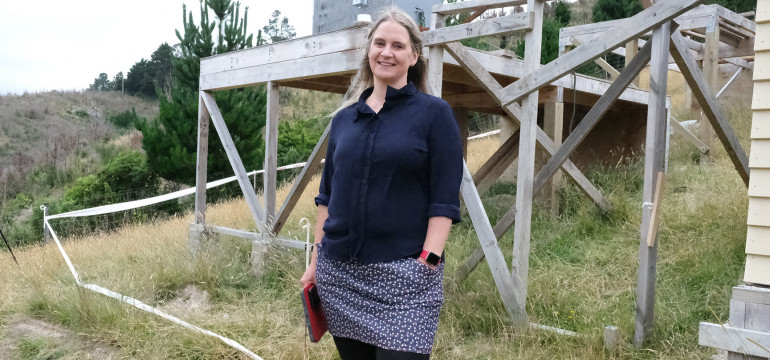Technique doubles foundation strength of at-risk homes on slopes
Five years after Wellington residents were shaken by the Kaikōura earthquake, new research has confirmed the effectiveness of some simple solutions to strengthen foundations of hillside homes and protect residents.
The research involved testing different foundation strengthening methods to reduce earthquake damage to timber hillside homes. The work was jointly funded by the Earthquake Commission (EQC) and BRANZ and was carried out by Roger Shelton, with support from Victoria University of Wellington.
Shelton explains that houses built on slopes have tended to perform poorly in an earthquake. This is because foundations are taller at one end than the other, or may be of mixed type, resulting in a twisting motion and making earthquake damage more likely.
While the modern standard houses performed well overall, the older style foundations showed a clear need for strengthening.
“The results were even better than we expected, as some very basic, cost-effective retrofit methods turned out to strengthen the foundations by more than 100 per cent,” Shelton says.
Researchers built four types of timber foundations on a sloping paddock north of Wellington: two to the current NZS 3604 standard and two in the style of homes built before the 1970s. They then tested each foundation under simulated earthquake shaking.
Two cost-effective methods of strengthening were then installed and tested: diagonal braces between the piles and sheets of plywood fixed to jack-stud walls.
“Results showed that plywood was the best performing solution, delivering more than double the performance of unstrengthened foundations. Where access prevented this solution from being used, extra bracing between foundation piles still provided a significant increase in performance,” Shelton says.
Research findings have been published in Build Magazine(external link) and submitted to Standards NZ to review against the current timber framing standard.
Dr Jo Horrocks, Head of Resilience Strategy and Research at EQC, says this is a great piece of very practical research because it aligns with our mission to reduce the impact natural disasters have on people and property.
“Making New Zealand homes more resilient to earthquakes is what this research focused on. A lot of houses in New Zealand towns are built on slopes. It’s important we understand what’s going to work best on that type of land, not just on flat land, where most of the research has been done until now,” Horrocks says.
“What Roger and his team found will help to provide guidance for house foundations on sloping sites for new and existing homes not only in Wellington, but across Aotearoa New Zealand,” she says.
EQC media contact:
Dan Whitfield
027 202 8494 | media@eqc.govt.nz
